Home » Blog » Restaurant Reviews »
What are the best things to eat in Central Europe? And what are the most curious trends and habits in Central European food and drink culture? This, honestly, were the first things I thought when my good friends and travel companions, Malene and Emelie, asked me if I would be interested in going with them on a road trip of Central Europe.
 Polish Goulash: One of many dishes conquered in Central Europe
Polish Goulash: One of many dishes conquered in Central Europe
What an amazing opportunity for the blog, I thought next. You see, every year in the life span of this blog, I’ve allowed myself some time off from blogging to tour some particular destination and take in the sights, sounds and – of course – the food. The latter of which, I have shared with you, dear readers, in a number of posts called Things I’ve Learned Touring <insert destination here>.
Former destinations have included Dixie and Scotland, but at no point in my life have I toured and tasted Central Europe. The prospect (coupled with beautiful female companionship, promises of cheap beers and more than a handful of UNESCO World Heritage Sites), of course, was too good to miss. And so, needing no further persuasion, I agreed and long story short: after a surprisingly lacking level of planning, off we went!
For a full 14 days, we hopped through the Czech Republic, metropolitan and rural Slovakia, the Danube River, Vienna, Kraków Poland and even Berlin on the way home. On our way, we saw everything from ancient city centers to vast rural farm land, gorges and mountains to the shocking monument to evil that is the Auschwitz-Birkenau Extermination Camp. In short: enough to make a seasoned travel blogger jealous.
 City of Prague seen from above
City of Prague seen from above
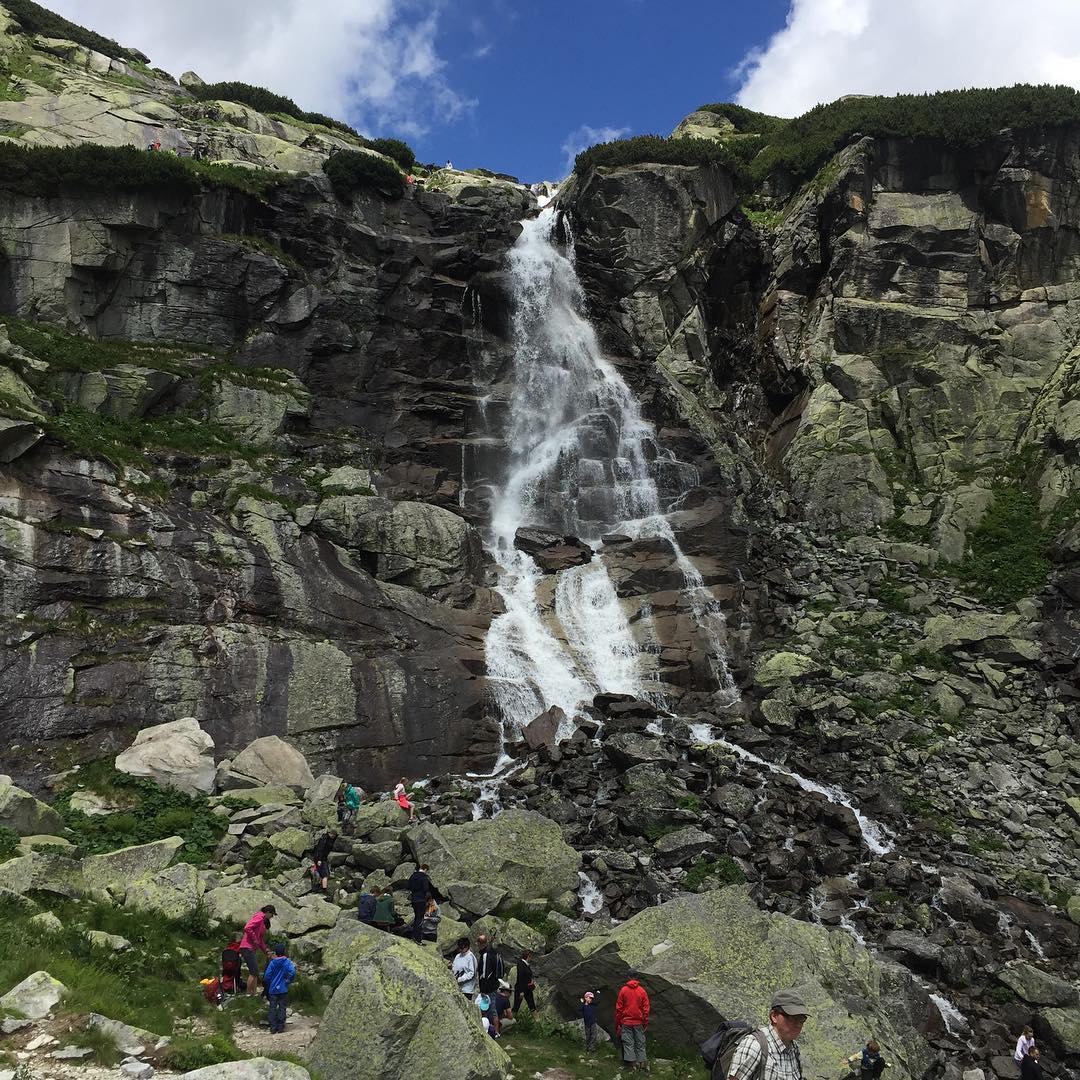 Waterfall discovered while hiking in the High Tatra Mountains in Slovakia
Waterfall discovered while hiking in the High Tatra Mountains in Slovakia
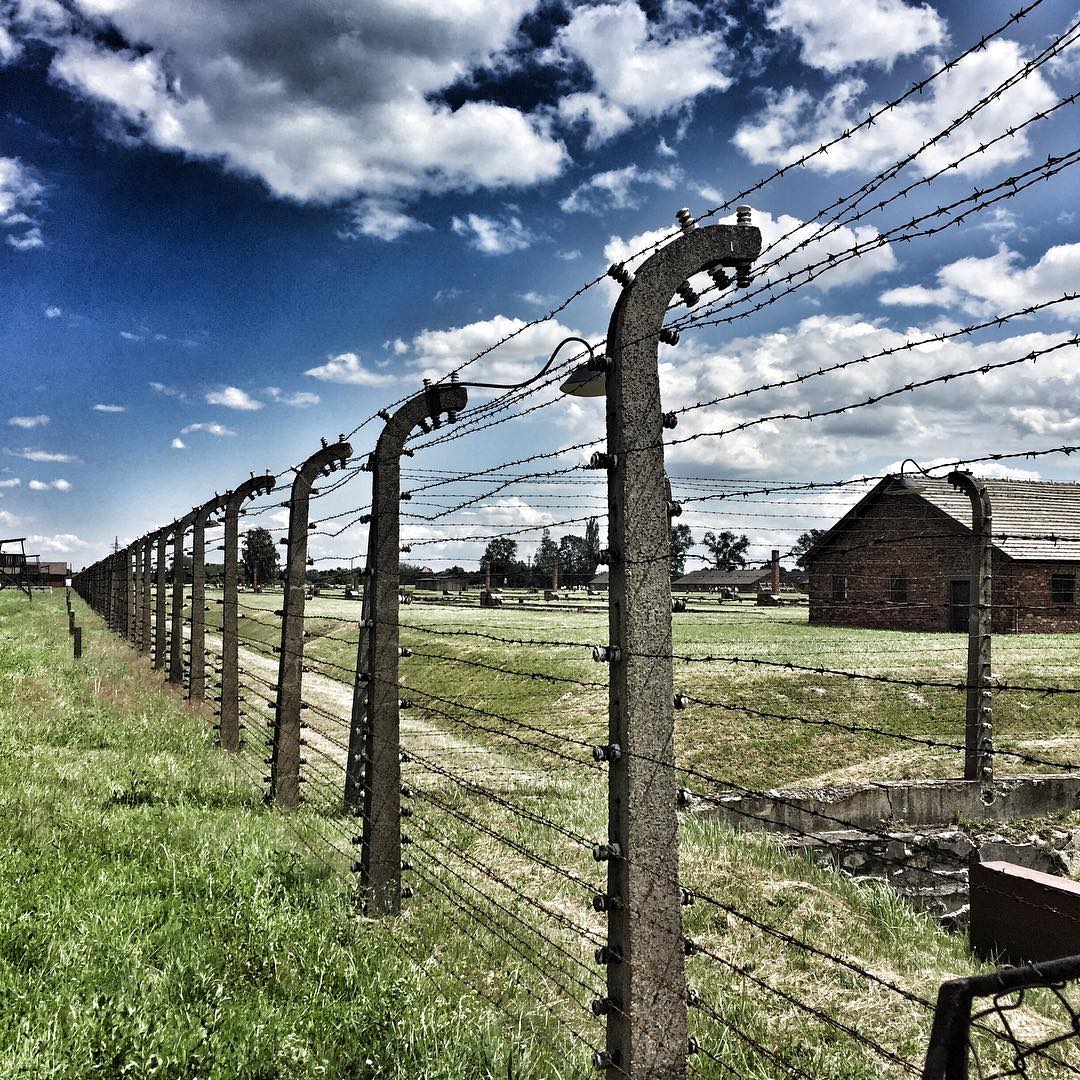 Barbed wire and blue skies at Auschwitz-Birkenau, UNESCO World Heritage Site and final resting place of hundreds of thousands of victims of the Holocaust.
Barbed wire and blue skies at Auschwitz-Birkenau, UNESCO World Heritage Site and final resting place of hundreds of thousands of victims of the Holocaust.
But I am no travel blogger by heart, so here now are – in no particular order – some of the culinary sights and sounds we saw in the form of ten interesting, surprising or downright weird culinary trends or customs I encountered spending two weeks as a gastro tourist in Central Europe.
SEE ALSO: EATING DIXIE – WHAT I’VE LEARNED ABOUT SOUTHERN FOOD
Oh, and to my beautiful brothers and particularly beautiful sisters of Central Europe reading this. Bear in mind. Everything you’re about to read is all in good fun and good-hearted sarcasm. Your countries and your people showed us a great time, great hospitality and even greater food – for that we are forever grateful!
Now, disclaimers out of the way… Let’s go!
Fun Fact #1: In Prague there’s a Brewery Hotel!
We kicked off our road trip of Central Europe in Prague, widely renowned as the beer capital of the world. Beer is everywhere in Prague – from cafés to restaurants, brew pubs, bars, beer gardens, corner shops, microbreweries and any combination thereof. But nowhere is beer more prominently featured and soaked into the spirit of a place than at the U Medvídku Brewery Hotel where we spent our first few nights of the trip. Yes, brewery hotel… It’s a thing! And, honestly, where else would you expect to find me staying?
U Medvídku is an ancient (to the tune of 600 years old) brewery in the Center of Prague’s Old Town that quickly expanded into a beer bar that eventually expanded into a restaurant, a brewery shop and, finally, a hotel!
Today, the surviving micro brewery is billed as Prague’s smallest, but in a case of size doesn’t really matter, the hotel is still figuratively (and probably sometimes literally) soaked in beer. From the complimentary welcome pour of the brewery’s own Oldgott Dark Beer upon check-in over the Beer Cosmetics soaps and shampoos found in the bathrooms to the restaurant’s dishes flavored with house-brewed beer.
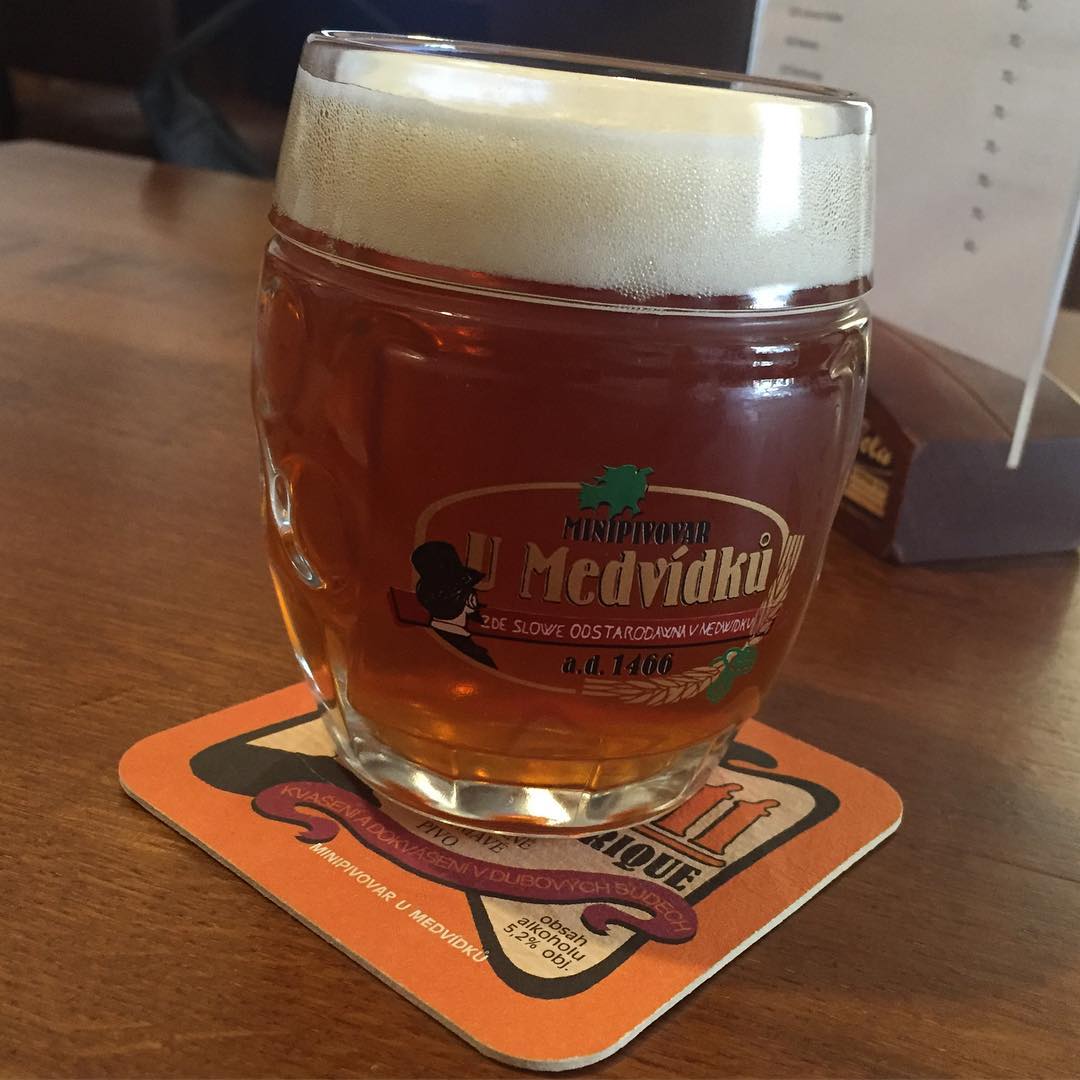 Pint of welcome beer at check-in at U Medvídku. Because that’s what everybody needs at noon after an overnight drive.
Pint of welcome beer at check-in at U Medvídku. Because that’s what everybody needs at noon after an overnight drive.
It all sounds rather gimmicky, I’m sure but it’s really not. They take their business seriously here and have no room for tackiness. There’s a friendly, welcoming atmosphere throughout all sections of the guest house and the beers, food, and service is excellent. The rooms are big, bright, clean and affordable. Not top modern, but kept well in the style of the ancient building in which they lie.
But don’t just take my word for it. The hotel, actually, came highly recommended from several sources in the know and while we dug our time there, I particularly enjoyed reading comments on my social media posts from other former visitors who spoke well about, you guessed it, the place, the food and the beer.
Fun Fact #2: Absinth Ice Cream, it’s a thing!
Beer isn’t the only way to get drunk in the Czech Republic. Not by a long shot. There’s also always the other Czech staple: La Fée Verte, The Green Fairy, Absinth!
Absinth, not to be confused with Absinthe (confused yet?), is a Czech take on the Swiss classic Absinthe, a herb and wormwood infused spirit that became insanely popular (and eventually banned) in Europe in the 1900’s. Czech-style Absinth, unlike classic Absinthe, is not an infused spirit but rather a flavored bitter made mainly with high-proof alcohol, wormwood essence and coloring.
Now, I’m not really sure how an insanely high-proof Swiss liquor laced with wormwood turned into an even higher proof Czech concoction, but this, mes amis, is not the point. the fact of the matter is that the city of Prague is overflowing with the stuff in any way, shape and form – even in kid friendly alternatives. Here, for example, is me enjoying a soft-serve Absinth ice cream cone.
A stable at many of Prague’s Absinth stores which featured a shocking array of colorful high-proof absinths as well as a mesmerizing and confusing array of (non-active) cannabis-related products including but certainly not limited to lollipops, soft drinks, beers and chewing gum.
Fun Fact #3: Meat is king here and the portions are jaw-dropping!
Most Central European nations are traditionally hard-working farming nations and hardworking farmers like you and me need sustenance. In traditional Cental European cuisine, sustenance usually translates into meat, fat and flour… Possibly cabbage… Vegetables and salads, uh, not so much!
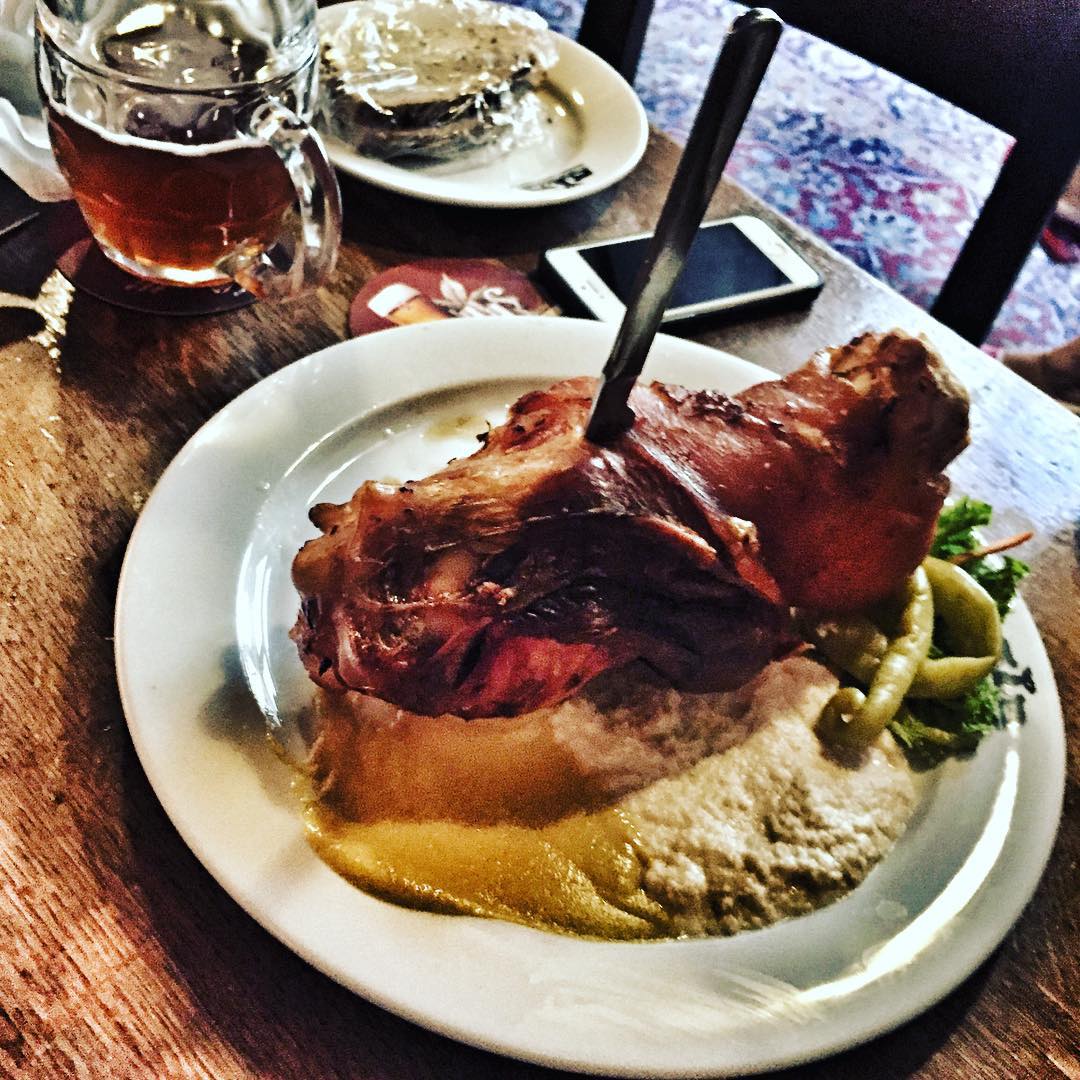 A kilo of beer braised pork knee… Serves one according to locals!
A kilo of beer braised pork knee… Serves one according to locals!
Meat, usually pork – sometimes beef, in other words is king here! Seeing starters consisting of 120 grams of beef tartare (with six pieces of toast) or half a pound of sausages in onion gravy is not at all uncommon. Followed, of course, by a variety of popular main dishes containing maybe a full kilo of roast pork knee or maybe a mere 500 grams of ribs for the slight hunger? How can we be so sure of the weight of the dishes in question? Not to worry, would be traveler, most restaurant menus will proudly display the approximate weight of meat portion of a dish next to the price and description – for your convenience!
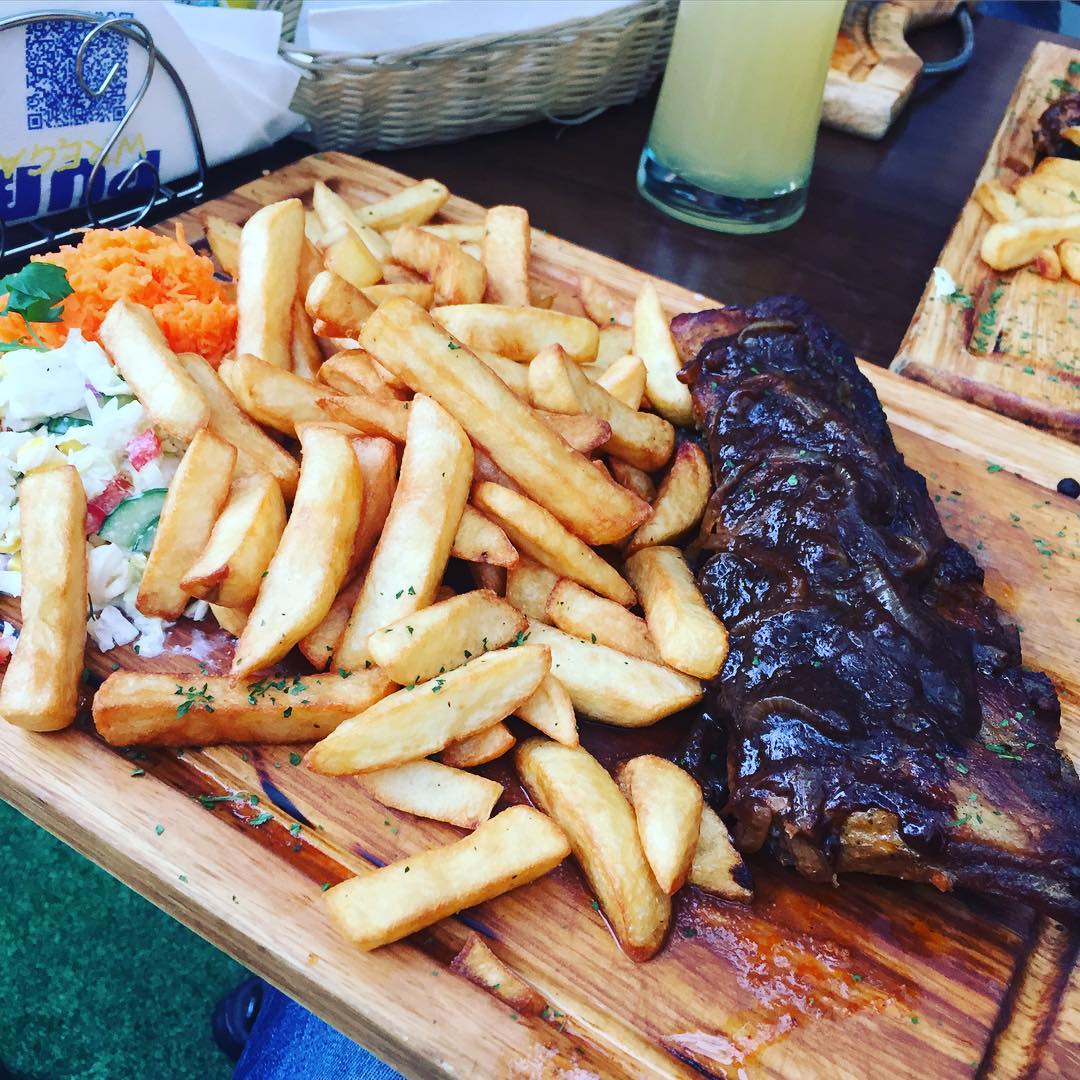 Ribs and fries – lord have mercy!
Ribs and fries – lord have mercy!
Actually, were it not for the starch-laden side dishes often consisting of dumplings made from flour and/or potatoes, Central Europe would be an Atkin’s or LCHF fanatic’s wet dream. And speaking of which, if the menu does not stipulate that your dish contains some sort of starchy component or side dish, best ask your waiter – sides are often ordered and sold separately.
Fun Fact #4: The vegetarian menu often has some, uh, meaty options
Speaking of meat being king, we had some pretty humorous experiences exploring the vegetarian options at some of the restaurants we visited. Apparently, in some regions, meat is defined as pork and beef-based dishes. Bacon, chicken and sometimes ham in smaller quantities are, apparently, classified as fruits and vegetables. That’s the only plausible explanation I have for some of the vegetarian option like the ones below, we dug up in rural Slovakia. Have I mentioned yet that I love this country?
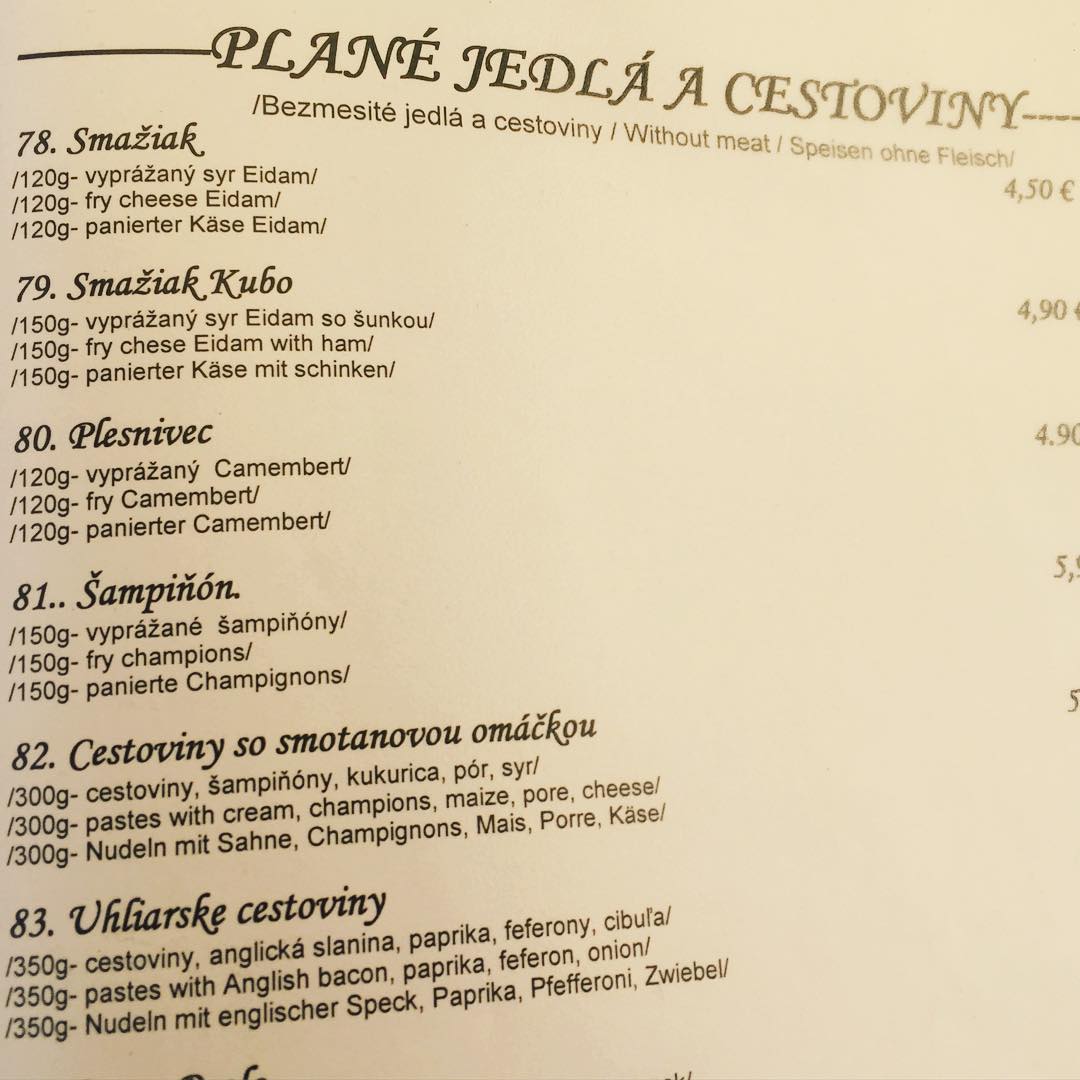 Behold! A Slovak vegetarian menu. Look closely. Notice anything odd?
Behold! A Slovak vegetarian menu. Look closely. Notice anything odd?
 But fear not, there is good vegetarian cuisine to be had. Here fried cheese with baguette, onion jam and a salad
But fear not, there is good vegetarian cuisine to be had. Here fried cheese with baguette, onion jam and a salad
Fear not, though, if you are indeed a vegetarian, most places will offer at the very least a few choices of salads. Rumor even has it that some of the world’s better vegetarian and vegan restaurants can be found in and around Bratislava. At the time of our visit, though, I decided that sauerkraut soup with smoked meats and mushrooms was plenty vegetarian for me, thank you very much.
Fun Fact #5: Caraway is the spice of life in Central European Cuisine
Going into this whole eating experience, I was warned by some sources that Central European cuisine might, at times, be a little bland.
This I honestly never experienced. The Central Europeans do love their spices, but they like a selected few – like say salt, pepper, paprika, chili and caraway – and, of those selected few, caraway is definitely king. It’s in everything! From your breakfast rolls over your fried potatoes for lunch to your evening meal of braised duck with red cabbage and caraway seeds.
SEE ALSO: EATING SCOTLAND – WHAT I’VE LEARNED ABOUT SCOTTISH FOOD
Even immigrants serving street food have changed their ways and culinary traditions so that you may naturally enjoy your Döner Kebab served in a caraway seed bun. Caraway, they say, is an acquired taste. Give it two weeks, I say, and even larger amounts of caraway will seem strangely undetectable to your palate.
Fun Fact #6: Kofola – the Communist era Coca Cola knock-off that is weird but awesome!
Take a look at the soft drink in this picture. This is Kofola: a cola-like carbonated caffeinated soft drink originating in Communist Era Czechoslovakia. First produced in 1959 as a use for excess caffeine from coffee roasting, it became a popular substitute for Western cola-drinks like Coca Cola and Pepsi that were, obviously, not generally available.
Through the fall of the Iron Curtain, the rise of a new market economy and a largely peaceful split of Czechoslovakia into two distinct states, Kofola has remained popular and even gained a cult following amongst the young and hip. No, seriously!
My sources on the inside tell me that the makers once tried to stop production of the drink, but were met with such disdain and public outcry that production resumed and was even expanded to include new exciting flavors like lemon, vanilla and watermelon. I somewhat doubt this claim, but the fact remains that the drink is insanely popular.
Curious as to what a Communist era Coke knock-off tastes like? We once again put our bodies on the line so you don’t have to… And it’s actually pretty interesting! Definitely a lot less sweet than your average Coca Cola with herbaceous notes, spice and a truckload of caffeine. In terms of aroma it’s actually a lot more like sweetened virgin Jägermeister (if that were a thing) than actual Cola. The taste is dry, slightly sweet with a clear spicy herbal character and more pronounced notes of orange and lemon peel than its western counterparts. It’s cola, but not really. An acquired taste but definitely interesting. Especially to my friend, fellow food blogger and certified super taster Malou who, given a taste, actually preferred it to “The Real Thing”.
Fun Fact #7: Breakfast is the most important (and diverse) meal of the day!
Though some have argued that I posted my fair share (and everybody else’s, probably!) of food pictures to my Instagram account during the trip, I posted very few of the breakfast options we encountered. This was mainly because I didn’t realize that you can actually tell a lot about a country’s food culture by looking at its hotel buffets.
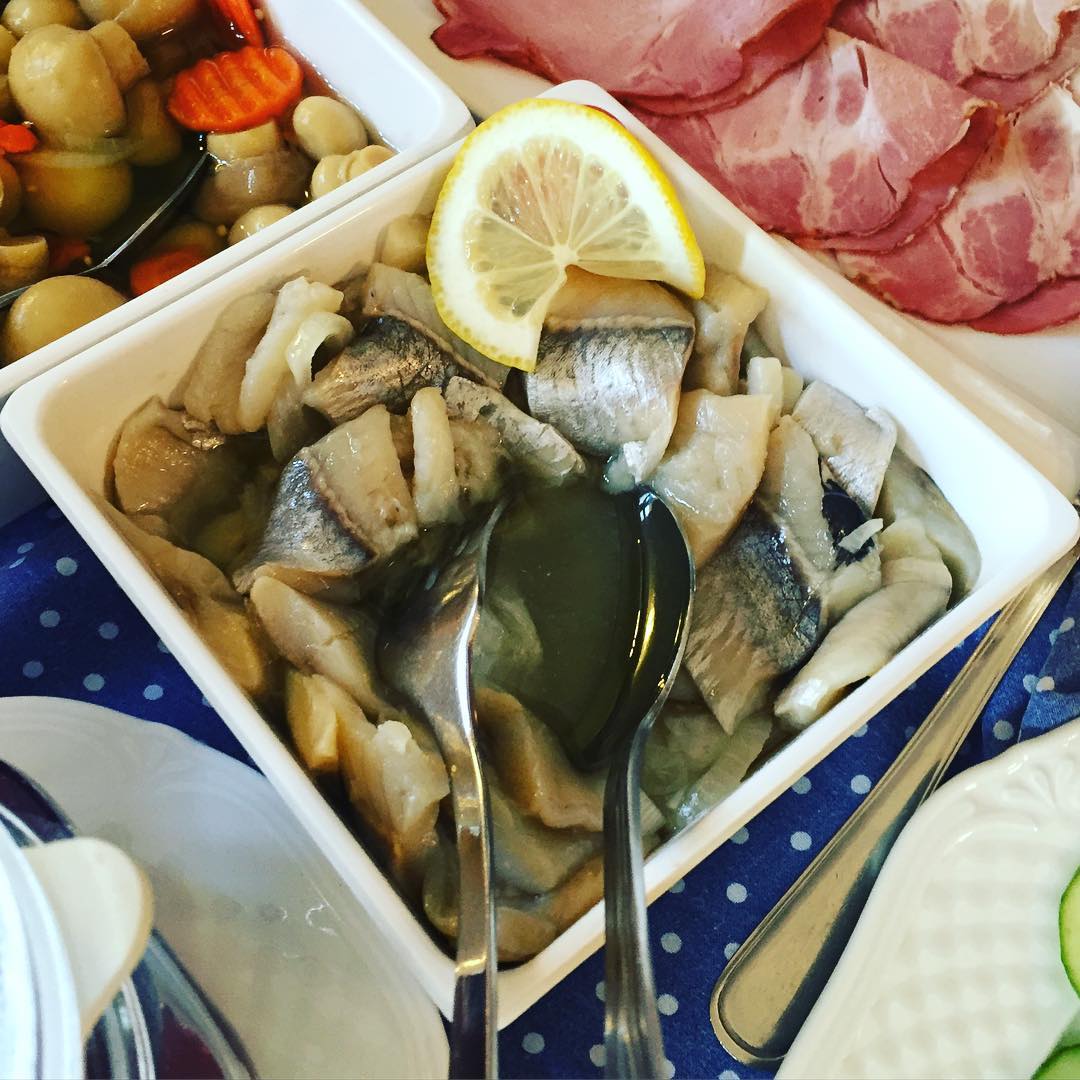 Pickled herring for breakfast anyone?
Pickled herring for breakfast anyone?
From tripe soup in the Czech Republic to fried eggs with pickles In Slovakia over blood sausage, freshly smoked salmon, quiche Lorraine, cake buffets and everything in between to pickled herring and Kielbasa with sauerkraut in Poland and fried eggs with potatoes and fresh fruit in Berlin… We encountered numerous ways of starting the day, all with a bit of local flair and character.
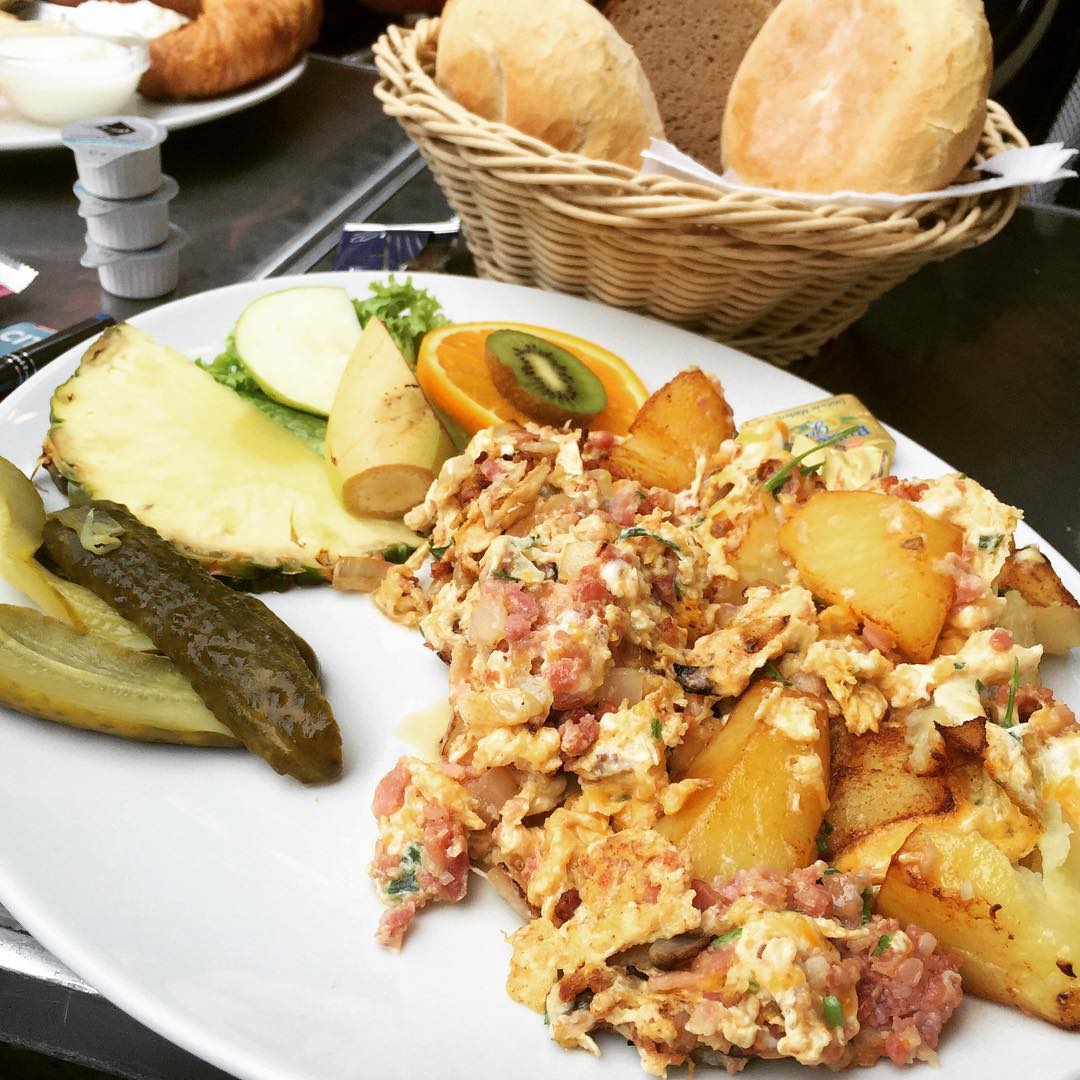 Eggs, Potatoes, Bacon, Pickles, Fruit Salad!
Eggs, Potatoes, Bacon, Pickles, Fruit Salad!
Some options were more interesting than great, but great diversity was definitely found… And that’s all well and good as long as you remember that if you ask for a large, black coffee in Central Europe, you’re likely to be served a double shot of espresso. Unless you’re in Vienna, of course, where you’re likely to have the best coffee experience of your life..
Fun Fact #8: Follow the advice of locals and fellow foodies – sooner or later, things will get weird!
This is my third year doing one of these round-ups and as always before heading into a food culture I knew relatively little about, I reached out to readers, followers and fellow foodies for inspiration and suggestions of things to try. This year, my friends, you delivered some truly unique, surprising, memorable and downright scary suggestions.
My buddy Martin over at rigeligtsmor.dk, for example, suggested a kick-ass monastic brewery in Prague who aside from an awesome beer selection conjured up one of the best lunches of the entire trip and probably the best goulash I’ve ever had (love you gran, I’m sorry!).
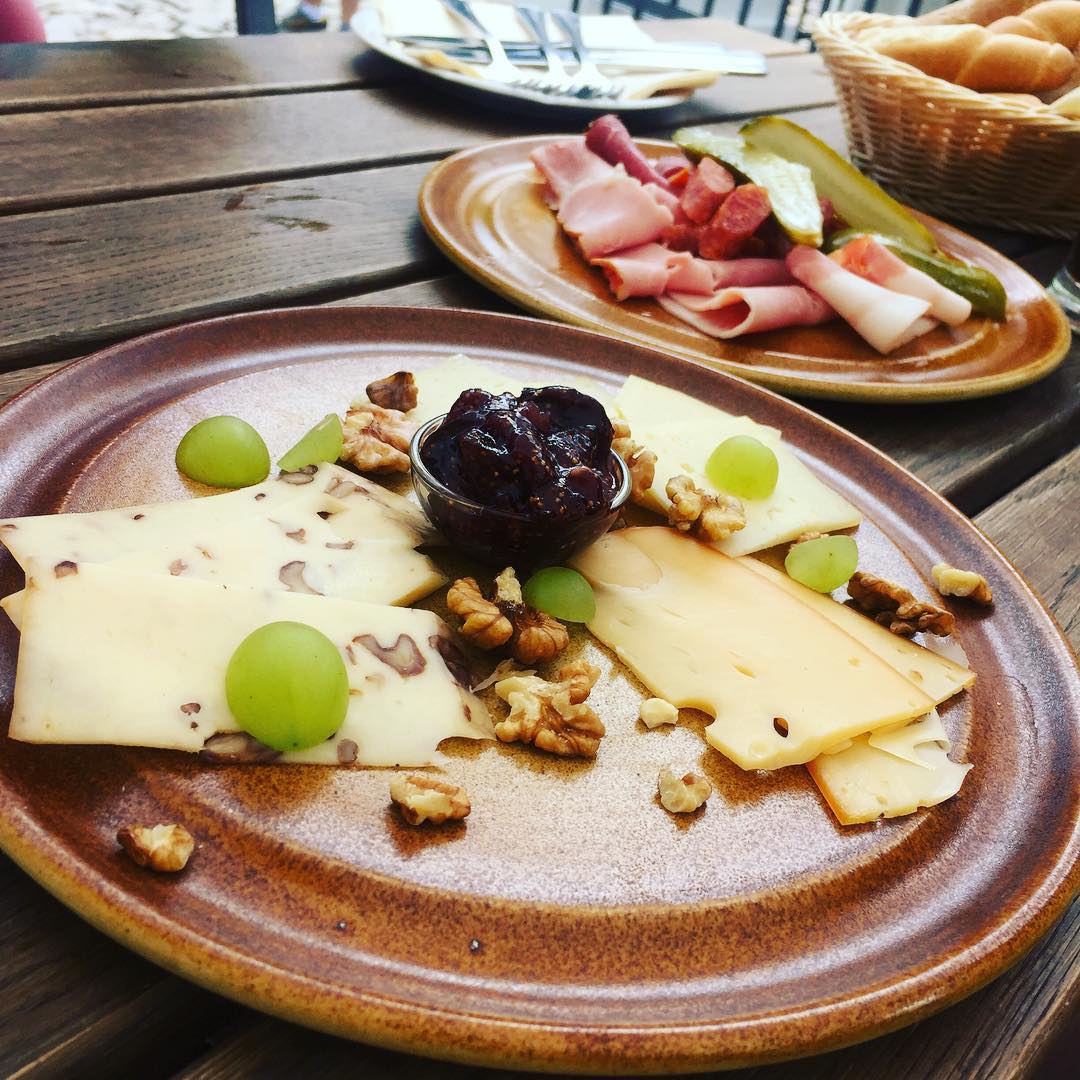 Brewery Platter at Strahov Monastery Brewery – lunch spot recommended by my buddy Martin
Brewery Platter at Strahov Monastery Brewery – lunch spot recommended by my buddy Martin
The great people of Facebook had numerous suggestions, including a stop-over at a Bratislava brew pub who cooked up a spin on traditional Slovak Sauerkraut soup that turned out to one of the best things I’ve ever eaten – ever! More on that in another post.
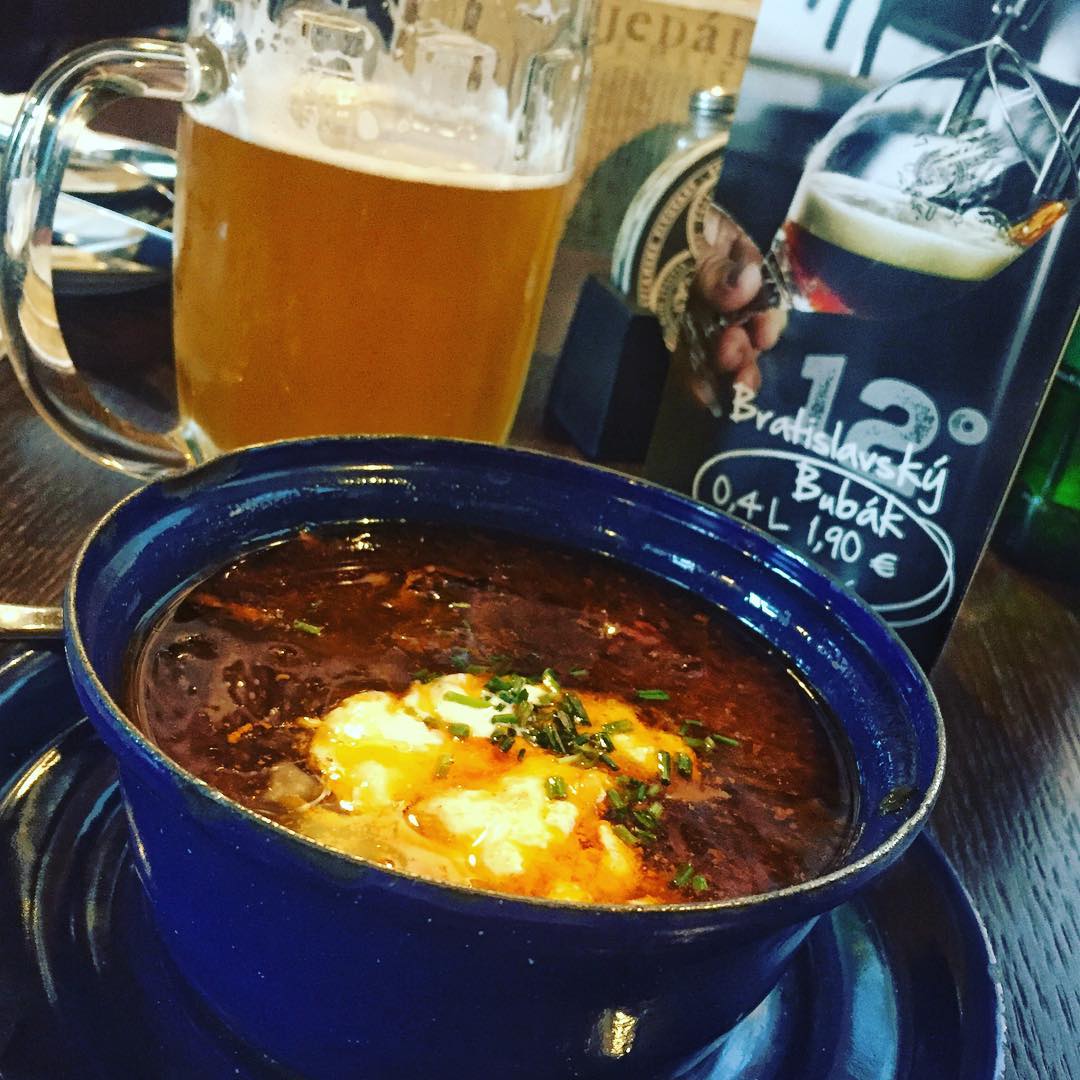 Slovak sauerkraut soup – one of the best damn things I’ve ever eaten
Slovak sauerkraut soup – one of the best damn things I’ve ever eaten
And then, of course, there was the one, the only, the immortal Hot Dog Judge who by way of local connections and Instagram pointed me in the way of a Kraków Kielbasa truck that quickly had me asking myself the question: Hmm, would I rather want a horse, sheep, goat or boar Kielbasa? Apparntly these sort of things happen when you listen to the Judge. Why was I not warned? Thanks a fucking bunch, dude, I now owe you a drink and a kick in the shin! 😉
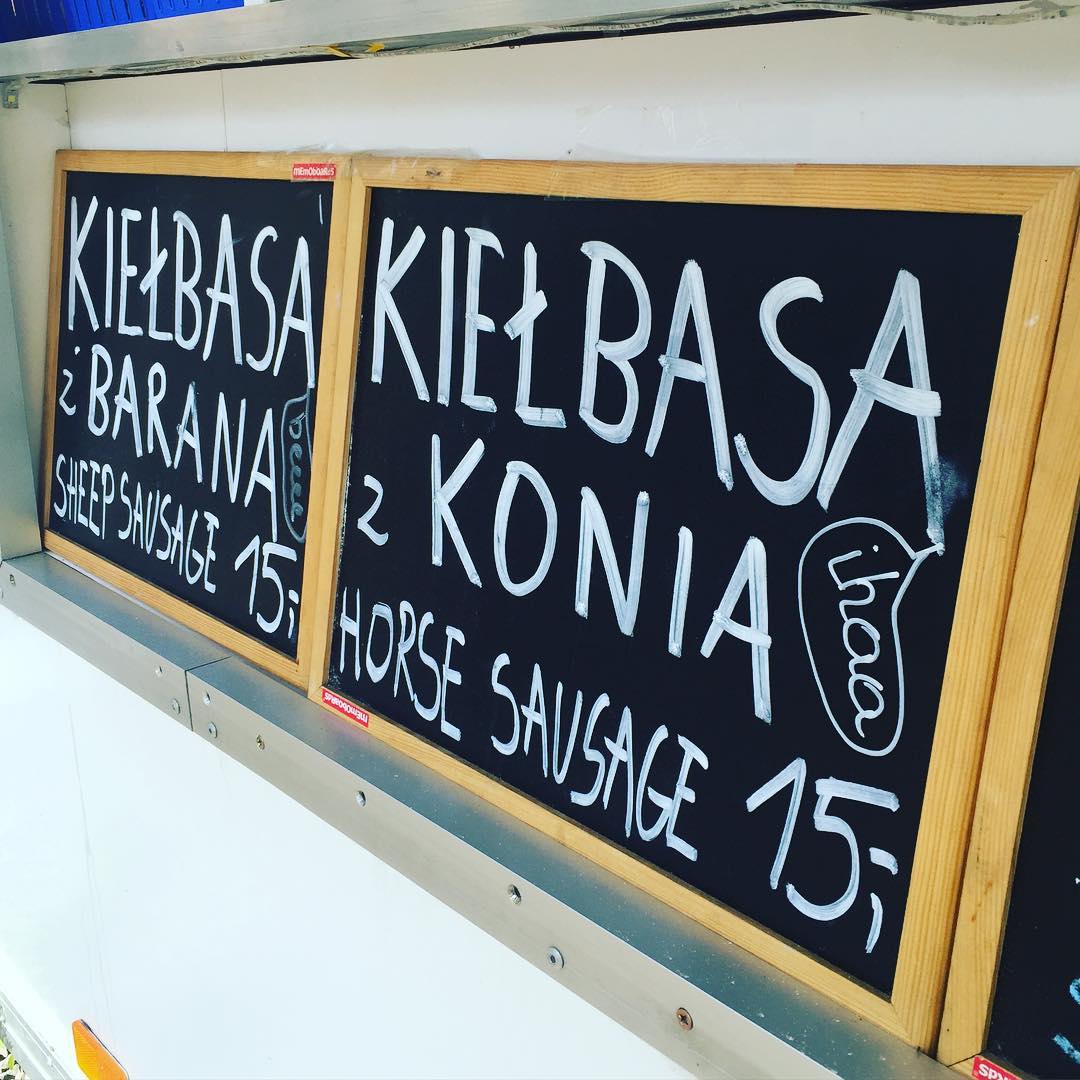 Pork? Sheep? Horse? Goat? That is the eternal kielbasa question!
Pork? Sheep? Horse? Goat? That is the eternal kielbasa question!
Fun Fact #9: Berlin has the world’s greatest toilet-themed bar!
Speaking of recommendations, my boss has told me numerous times (including one night in Berlin, go figure!) that if ever I you go to Berlin, I HAD to visit Klo Bar. Actually, come to think of it, just about everybody I know who has ever been to Berlin has told me that very thing. My traveling buddy Malene apparently heard the same thing. So, when we were walking from the parking garage to our hotel on our first morning in town and stumbled straight past the hallowed halls, we knew that later that night, we had to go!
 “Enter at your own risk” the sign literally says!
“Enter at your own risk” the sign literally says!
What is Klo Bar, you ask? Well, the best I can say is that it’s a 40+ year old institution in Berlin night life and, quite simply, the world leader within the field of toilet themed bars. So tacky, so full of junk, so rude and so ugly that it is actually traverses the portal of real and warps into cool as hell! Expect tacky décor, draught beers served in bed pans, toilets for bar stools, smoke, lights, buzzers, sounds, screams, remote-controlled penis-shaped water guns firing out of nowhere, noise, hydraulic tables moving on their own accord, horror memorabilia dropping randomly from the ceiling and a million other unexpected novelties designed to make you laugh (or cry).
I really would love to show you rather than tell you, but the place enforces a strict “no photo” policy which I, of course, respect. So you’ll just have to go on your own and explore the madness that is Klo! Or check out their iconic homepage.
Fun Fact #10: There are some extremely cheap, extremely awesome eats out there!
All joking and sarcasm aside, Central Europe more than anywhere, probably, offered us some incredibly memorable, tasty and ridiculously cheap meals. All we had to do was follow the golden rule of gastro tourism on the cheap: Dive off the main road and into an alley or down a flight of stairs and something good and authentic is bound to show up within minutes. Though I will try to sum up a few in a future post, the great eating experiences are too many to mention, but to name but one…
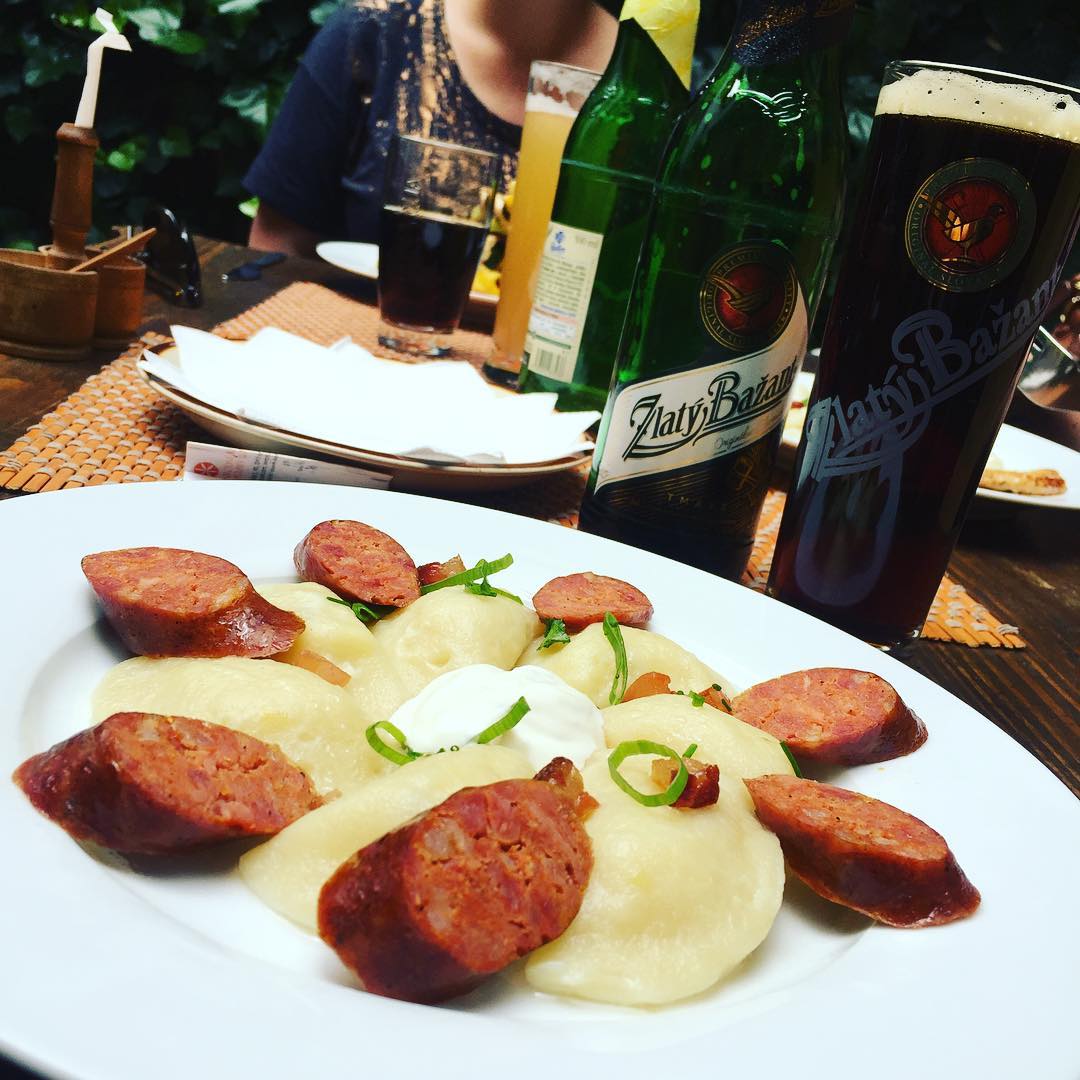 House-made sausage and pierogi from my most memorable meal of the trip
House-made sausage and pierogi from my most memorable meal of the trip
In one particularly memorable case, we ate lunch in the small Unesco World Heritage of Levoča. We tracked down a few side streets, past some boarded up windows, down an alley and through a carriageway. Eventually, we found ourselves in a quaint little courtyard restaurant where no one spoke a word of English and maybe fine words of German. Intrigued, we soldiered on and through the universal language that is pointing at a menu crafted with Google Translate, we succeeded in ordering what was easily my most memorable meal of the trip.
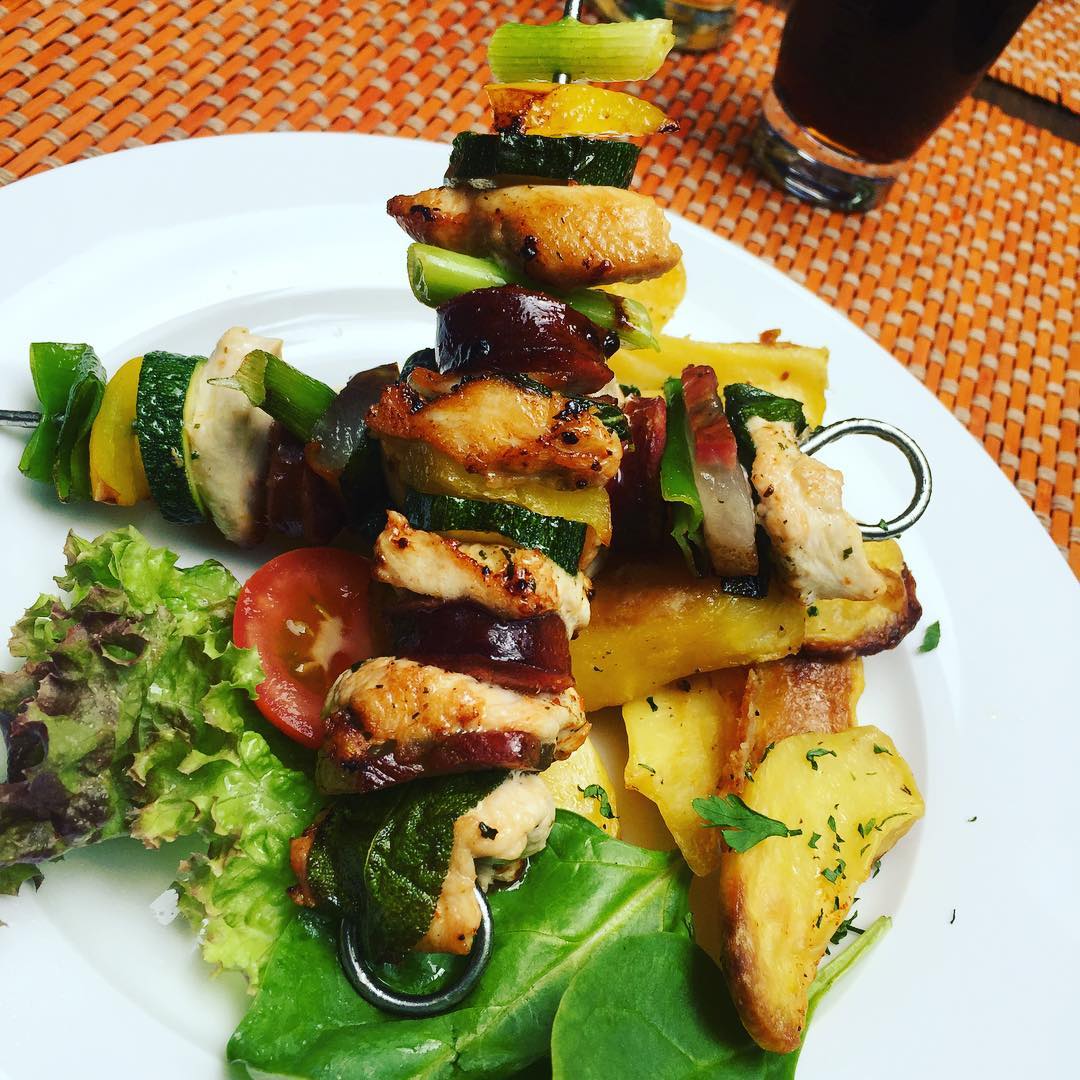 Malene’s chicken and smoked sausage skewer from my most memorable meal of the trip. Photo by Malene Jensen.
Malene’s chicken and smoked sausage skewer from my most memorable meal of the trip. Photo by Malene Jensen.
I had housemade sausage with local Spiss style cheese-filled pierogi, Malene enjoyed skewered chicken with smoked sausage while Emelie had pork schnitzel with Halušky (local potato dumplings). We had a pint of beer, a pint of Radler and a coke… We ate it up in the cool shade of the courtyard bushes and flowers on a hot summer day while listening to Slovak renditions of Simon & Garfunkel classics like Scarborough Fair… Grand total for a full, nourishing and immaculately prepared tasty meal and a bag of memories? 20 Euros… tips included, mind you!
But wait, there’s more Central European fun!
Well, there you have it friends, my top ten culinary observations amassed on a road trip of Central Europe. As always, I hope you’ve enjoyed this silly little round-up. Maybe you’ve even found some inspiration or gotten to thinking: “Hey, what do people traditionally eat in Central Europe? And what should I try if ever I go to Central Europe.”
Well, have no fear, that’s what part two of my Central European Culinary Tour round-up is all about: Ten things to eat in Central Europe!
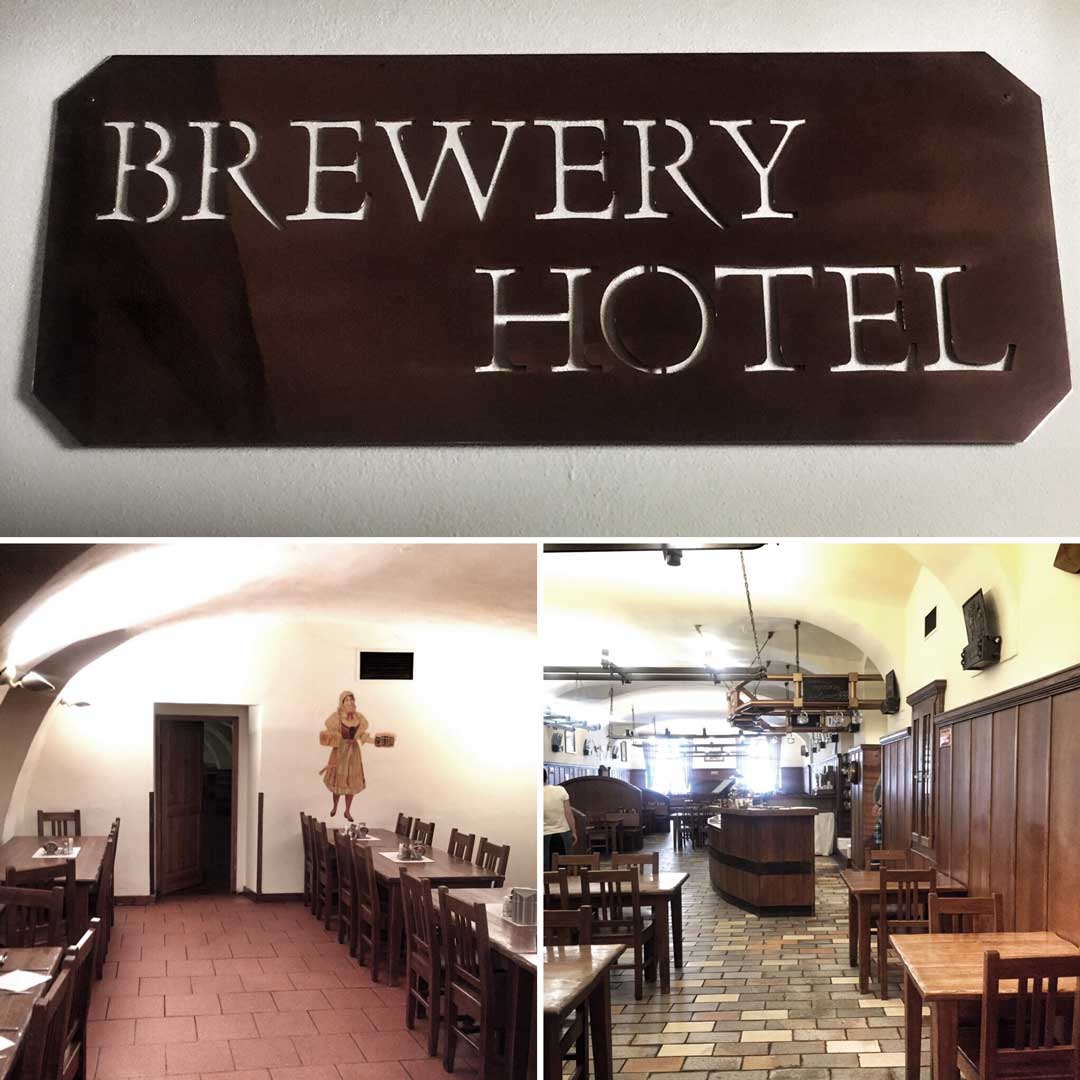

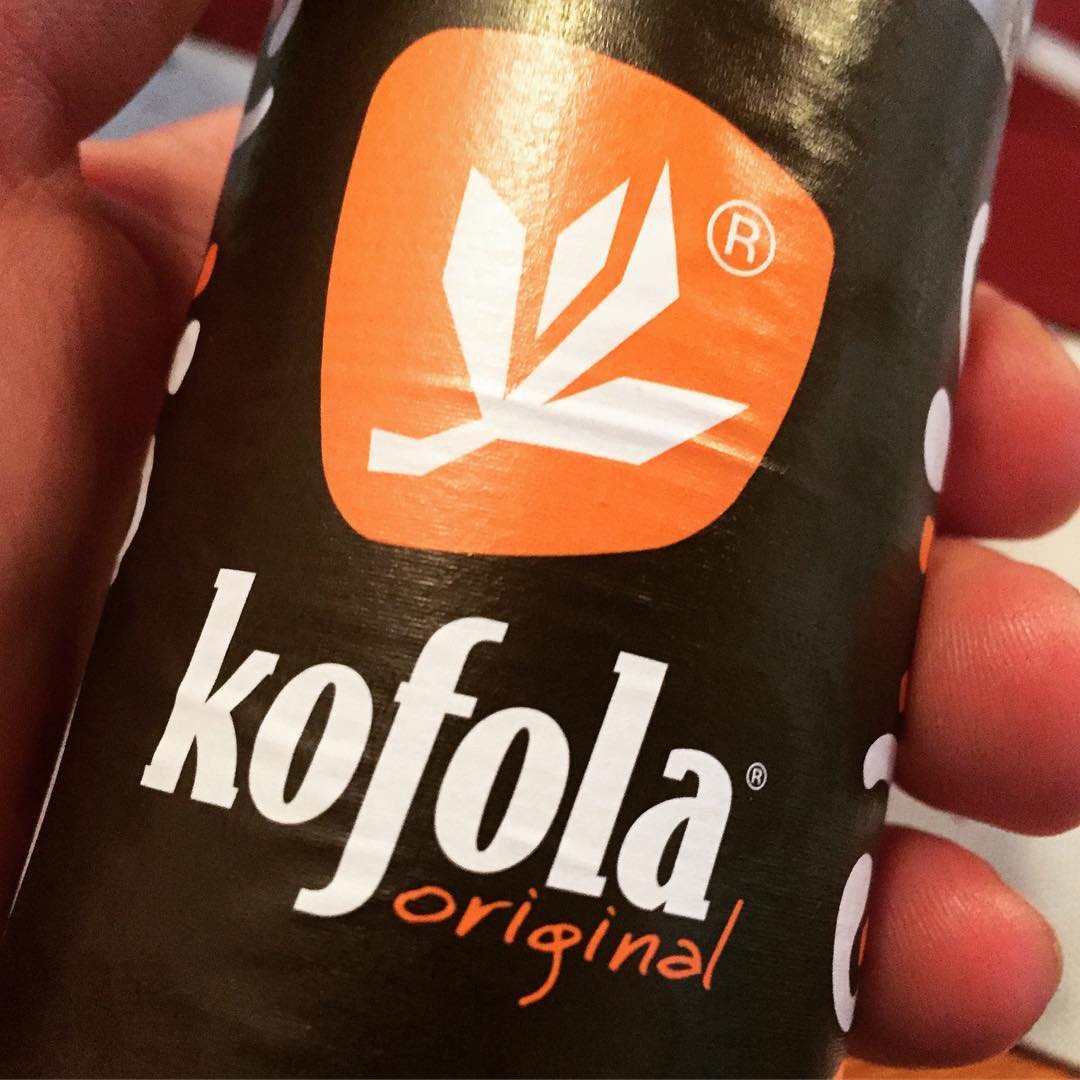
Elsker de her rundrejser! Og ja, det der med kommen har de et (lidt for) passioneret forhold til i bl.a. Prag – hvilket en kommenhader som jeg har det lidt hårdt med 😀
Glæder mig til dit næste indlæg!
Det er jeg lige godt sindssyg glad for at høre! Jeg holder også selv meget af at researche og lave disse indlæg 🙂 Prag syntes jeg egentligt ikke var SÅ slemt, men nogle af de mindre bjergbyer hvor hele tallerkner blev drysset med kommen ved anretning, der var jeg lidt presset – måske ikke så meget som i Kraków, hvor jeg fik en hel dusk dild ovenpå min goulash – men alligevel presset.
Jeg ville sådan ønske, jeg havde taget en flaske Rød Aalborg med, så havde jeg været konge af Central Europa, det er jeg helt sikker på! 😀
Det gør jeg også, Word var så venlig at smadre min kladde, men der er et indlæg om de ti bedste (og nogle af de allerværste) ting at spise på vej, blev lige afsporet af en restaurantanmeldelse, som lander i denne uge 🙂